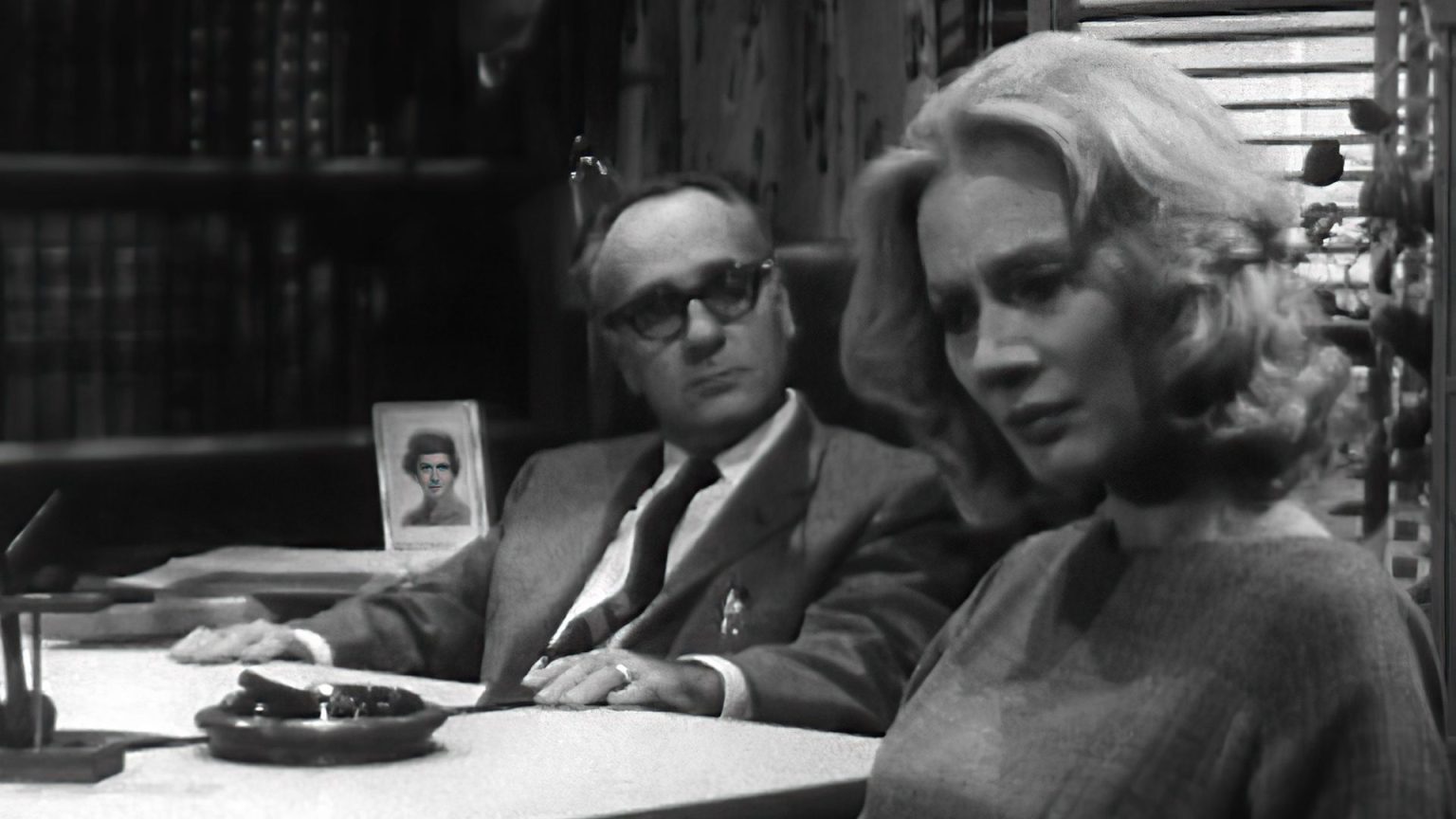Ever been haunted by a dream?
Surviving a freak accident, a musician sits at a massive pipe organ, playing thick tones that hover between harmony and discord, reactions stirred in those around to hear. But alone even in the company of others, she leaves town for a job elsewhere, the otherworldly music that flowed out of her fingers following her to the night highway. Mysteriously playing on the car radio, her own music becomes a soundtrack for the massive shadow of an abandoned pavilion out in the salt flats beyond, and the strange ghoul man who begins to haunt her.
Carnival of Souls is a dream. If not for Mary Henry, the central character, it is a dream for viewers, and one that will stick around after it has ended. Surreal, horrific, quiet and yet loud, the everyday mixes with the supernatural here and genres blend along with perceptions of what is really going on.
Shot on a limited budget from local investors in Lawrence, Kansas, the movie is a tribute to the ingenuity of the filmmakers who brought it to life in their town (along with one important Utah location). Director Herk Harvey was formed by theater experience, and had already shot dozens of non-fiction films for an educational film company. Cooking up the project with a co-worker, writer John Clifford, the movie was something he would direct while on vacation from directing other movies.
And that seasoned background allowed Harvey to capture a dreamscape on film.
Carnival of Souls flows gradually, yet jars suddenly. More than once, Harvey cuts from a scene into an action already in progress: the filling of a bath, an alarm clock, a walk in a park, a noisy club. The transitions happen faster than are comfortable, and play opposite the film’s measured cadences. Scenes of delirium pile on between a rooming house, a church, a department store, a desolate countryside—and in the midst of it is almost always Mary Henry. She is rarely offscreen in any scene, while she remains uncertain of what is happening—the center of everything, while everything refuses to make sense. This is dream territory: focused on the dreamer, but seldom coming into focus.
Because the film keeps drifting between worlds, its main character is a loner and a traveler caught in the middle. And framed by Harvey’s camera in doorways, one after another, Candace Hilligoss carries the part with exactly the right cool, aloof, and imperious quality. Her eyes constantly probe with a watchful quality, an expression that looks ill at ease with the world around her, that world invaded by more and more frequent appearances of the unnerving, unspeaking and staring man who will not leave her alone any more than the everyday people she encounters with awkward results. By her own admission, Mary does not fit in, pointedly stating, “I have no desire for the close company of other people.” Yet there is no peace in this isolation, she fears the other world that calls to her from a wrecked old pavilion out in the country, of what may await this lonely traveler.
While there is much to be admired in the many details often written up—imaginatively filming the ruins of an old resort, prefiguring the zombies of Night of the Living Dead, releasing the film to indifference only to become an influential classic decades later—there is only one thing that matters in the end with this movie.
Just start Carnival of Souls … and experience its dream.




